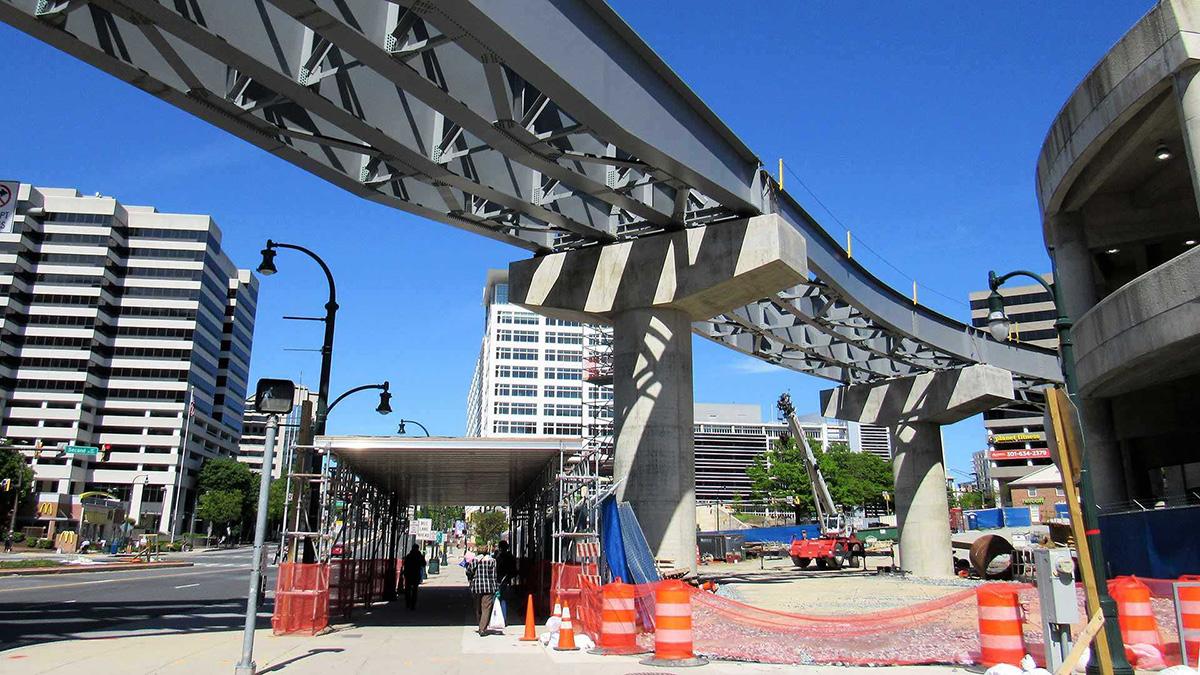Written by Maggie Haslam, originally published in Maryland Today.
Trains on Maryland’s Purple Line won’t begin service for at least another two years, but according to a new University of Maryland study, some residents living along the future transit corridor began seeing spikes in rent just after construction shovels broke ground.
Published this month in International Regional Science Review, the study found that the cost of two-bedroom rental units located within half a mile of the 11 future Purple Line stations in Montgomery County rose $480 a year between 2015—when the light rail project was announced—and 2017, when the project broke ground. That compares to a $360 per year increase in other parts of the county. For three- and four-bedroom units, the increases are even more dramatic: $600 a year near a station compared to $320 elsewhere. It is the first study to investigate the impact of planned light-rail transit projects on multifamily rents.
“The events that took place between 2015 and 2018 offered a public confirmation that the Purple Line would be built,” said Qiong Peng Ph.D. ’20, who wrote the study along with UMD National Center for Smart Growth Associate Director Nicholas Finio and center Director Gerrit Knaap. “In talking with residents, we had our suspicions that there was an increase in rents early on during that pre-service period. This just confirms those suspicions.”
Running from Bethesda to New Carrolton, the Purple Line will connect the spokes of the Washington Metropolitan Area Transit Authority system (Metro) and represents the region’s biggest transit investment of the 21st century, with 21 stops including five on or near the University of Maryland’s campus.
Using property data and annual rental housing surveys in Montgomery County, the researchers examined rents for studio, one-bedroom and multi-bedroom units located one mile or more from proposed stations and a half-mile from proposed stations around the time of project’s initial announcement and soon after construction began, noting larger increases in rental prices for units near proposed stations.
Researchers said the “anticipation effect” spurred by slick renderings and potential development likely played a role in rent increases, but the significant shortage of affordable multi-bedroom housing in the county, coupled with the cost of moving, likely created a vulnerability to rising rents, even when residents are dealing with the noise and disruption of construction.
“Property prices will increase around transit investments because of the future value that project will bring,” said Finio. “That makes sense. What makes less sense to some academics is a landlord being able to charge higher rent right now for something that doesn’t exist, and further, something that’s a pain.”
Communities lining the Purple Line are economically and demographically diverse, and include several low-income and immigrant-majority neighborhoods, which, according to researchers, collectively host a large portion of the Washington region’s affordable housing stock.
Advocates, county representatives and housing experts—including researchers at the University of Maryland—have for years indicated the correlation between property values and large-scale transit projects, and the gentrification and displacement that often comes as a result. UMD’s Purple Line Corridor Coalition has worked with county leaders to push forward several policies to protect affordable housing, including tenant protection laws and right of first refusal, which allows counties to pick from a list of mission-driven developers for property sales and mandates that a percentage of housing stay at 60-80% of the area median income.
But these measures alone aren’t enough, said Trent Leon-Lierman, Maryland organizing director of immigrant-rights group CASA. Policies that ensure rent stabilization, which caps rent increases at the county level (and are fueling debate in Montgomery County), will be essential to keeping residents in place.
“I can share lots of stories of rents going up along the Purple Line, 30, 40, even 50%” he said. “These are very vulnerable residents; many have kids in local schools, work nearby jobs and don’t have the credit history or first- and last-month’s rent to relocate.”
There have been numerous studies on the link between rail investments and property values, the researchers said. While it is expected that projects like the Purple Line would result in rising rents, seeing increases during the early construction period is a finding that should alert other regions contemplating significant transit projects.
“If you’re worried about gentrification, you can’t wait until the train’s running,” said Knaap. “You need to put safeguards in place well in advance of the construction of the line, especially in vulnerable neighborhoods.”

